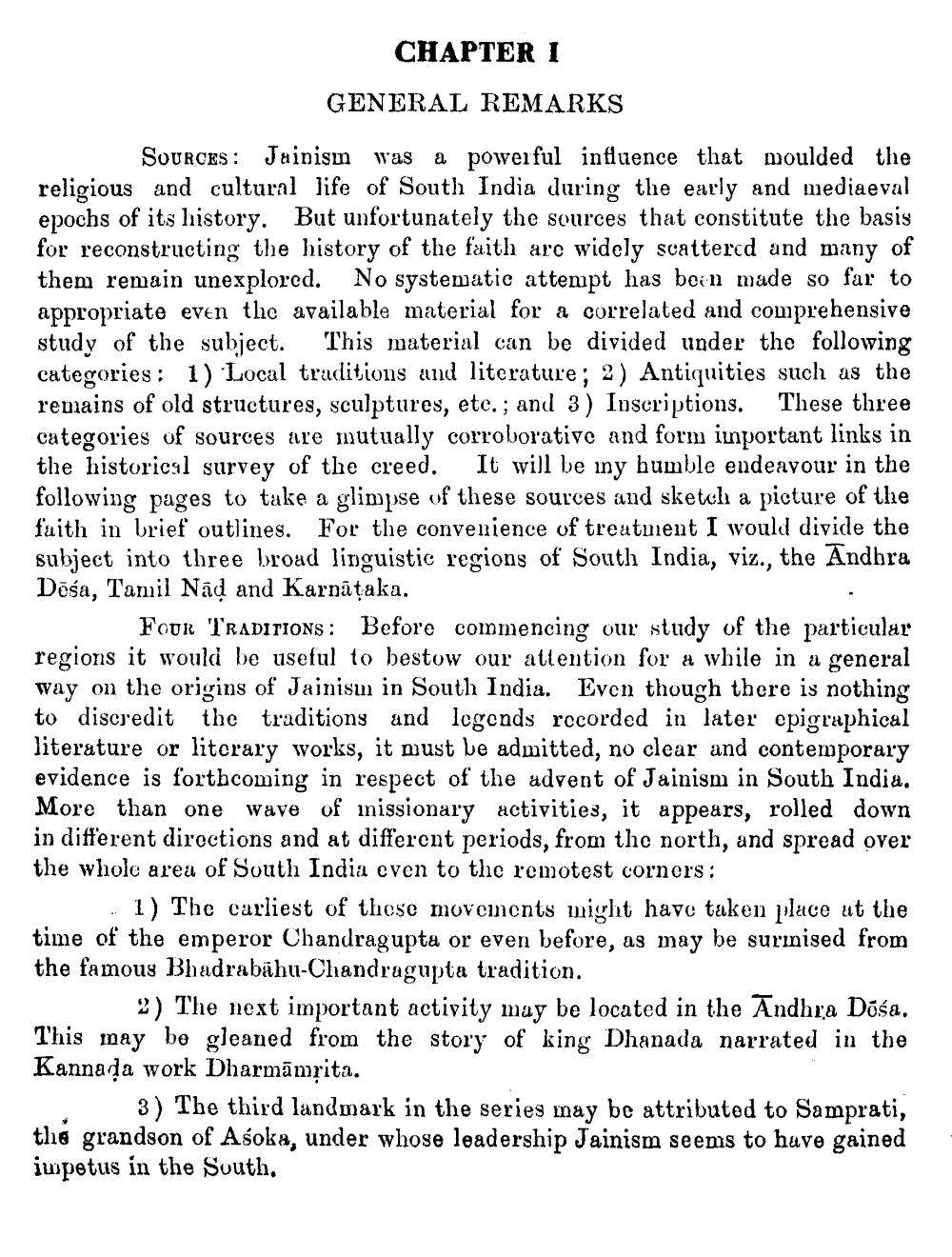________________
CHAPTER I GENERAL REMARKS
SOURCES: Juinism was a powerful influence that moulded the religious and cultural life of South India during the early and mediaeval epochs of its history. But unfortunately the sources that constitute the basis for reconstructing the history of the faith are widely scattered and many of then remain unexplored. No systematic attempt has been made so far to appropriate even the available material for a correlated and comprehensive study of the subject. This material can be divided under the following categories: 1) Local traditions and literature; 2) Antiquities such as the remains of old structures, sculptures, etc.; and 3) Inscriptions. These three categories of sources are mutually corroborative and form inportant links in the historical survey of the creed. It will be iny humble endeavour in the following pages to take a glimpse of these sources and sketch a picture of the faith in brief outlines. For the convenience of treatment I would divide the subject into three broad linguistic regions of South India, viz., the Andhra Dēśa, Tamil Nād and Karnāțaka.
Four Traditions : Before commencing our study of the particular regions it would be useful to bestow our attention for a while in a general way on the origins of Jainism in South India. Even though there is nothing to discredit the traditions and lcgcnds recorded in later epigraphical literature or literary works, it must be admitted, no clear and contemporary evidence is forthcoming in respect of the advent of Jainism in South India. More than one wave of inissionary activities, it appears, rolled down in different directions and at different periods, from the north, and spread over the whole area of South India even to the remotest corners:
1) The carliest of these movements might have taken place ut the time of the emperor Chandragupta or even before, as may be surinised from the famous Bhadrabahu-Chandragupta tradition.
2) The next important activity may be located in the Andhra Dosa. This may be gleaned from the story of king Dhanada narrated in the Kannada work Dharmāmrita.
3) The third landmark in the series may be attributed to Samprati, this grandson of Asoka, under whose leadership Jainism seems to have gained impetus in the South.




